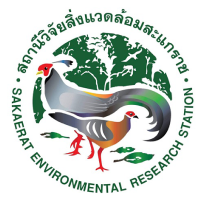Keywords :
Dung Beetle; Insect; Sakaerat Biosphere Reserve
บทคัดย่อ :
Astudy of dung beetle species diversity and population dynamic for monitoring the biodiversity changes in the Sakaerat Biosphere Reserve, Northeast Thailand was conducted in six different vegetation habitats from two research sites. The dung beetles were monitored using baited pitfall trap every two months from April 2000 to August 2001. A total of 177 dung beetle species from eleven genera of Aphodius, Caccobius, Cassolus, Catharsius, Copris, Panelus, Paragymnopleurus, Onthophagus, Phacosoma, Sisyphus and Synapsis were collected from the research sites. Among those, 79 species had already been identified while 98 species were unknown and many of them are being described as new species. Only four out of eleven captured genera Aphodius, Caccobius, Copris, Onthophagus and Sisyphus were widely distributed in all studied habitats. The genus Onthophagus is the most abundant and diverse species group among those captured genera. The dung beetle species diversity was lowest in the disturbed area of agriculture whereas the dung beetle species from the mixed deciduous forest was the most diverse. However, the overall species diversity and richness among the natural forest (i.e. dry dipterocarp forest, dry evergreen forest) and forest replanting were not significantly different. The dung beetle species collected were mostly small in size which related to the small size of the animals live that in the area. This effects of vegetation types and soil texture from different habitats on the dung beetle species diversity and their correlation were investigated and discussed. The dung beetle pupulation abundance was correlated with the rainfall. A small number of dung beetle occurred during the dry season and the highest number of dung beetles were captured during the wet season. The abiotic factor like temperature has no effect on the number of dung beetle.
เอกสารอ้างอิง :
Hanboonsong, Y. (2001). A Study of Dung Beetles Diversity for Monitoring Biodiversity in Sakaerat Biosphere, Northeast Thailand. MAB Young Scientists Awards.



